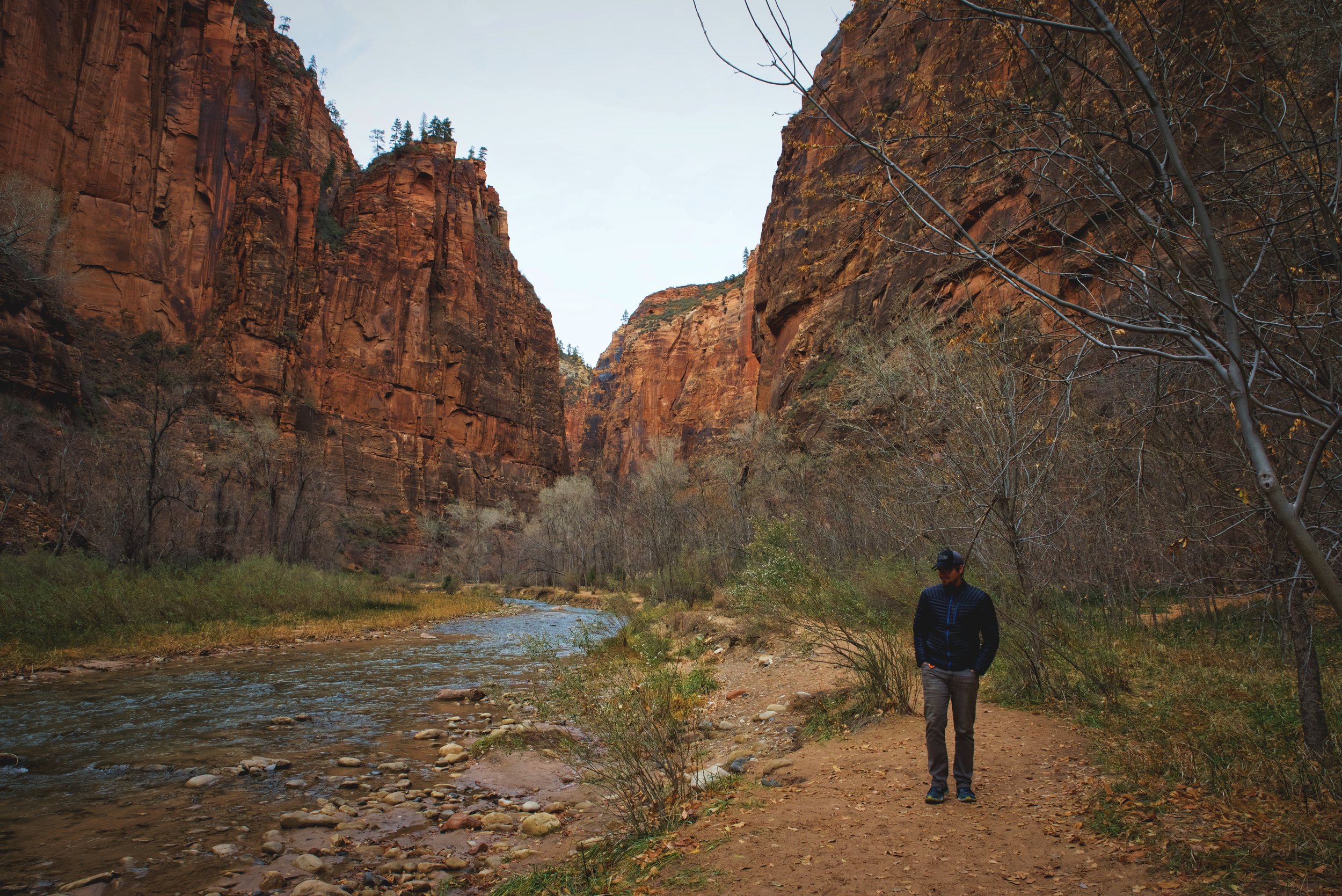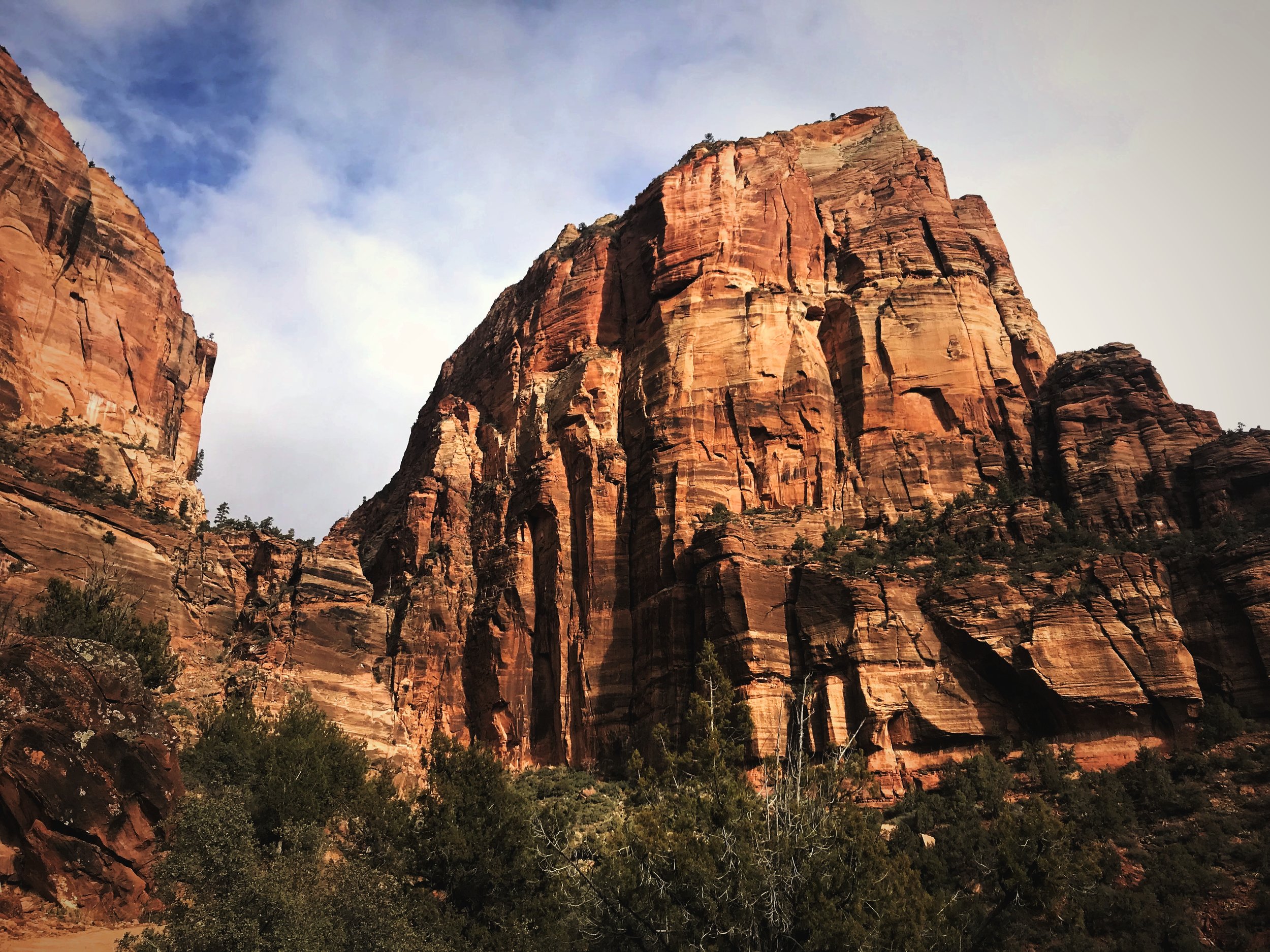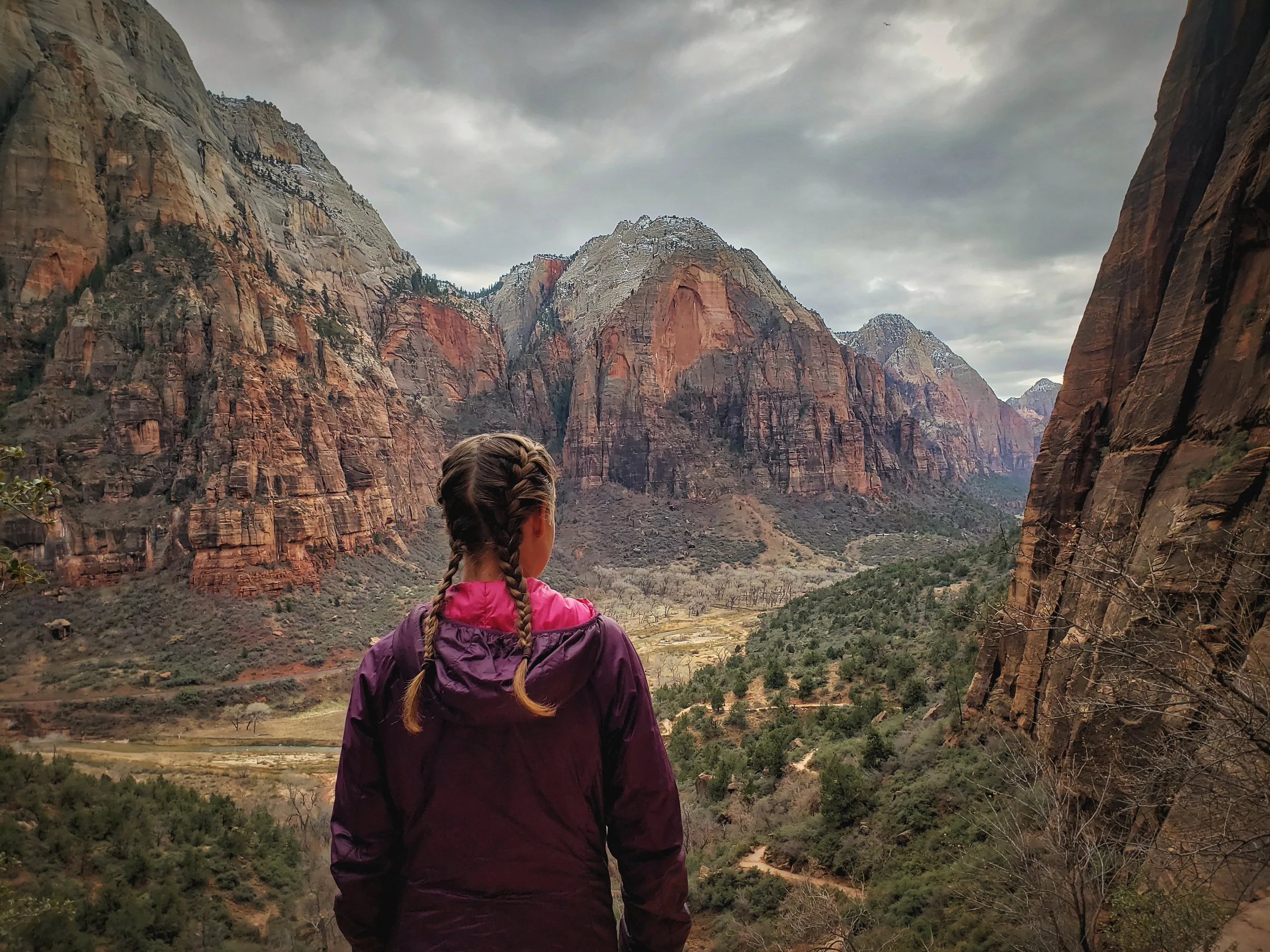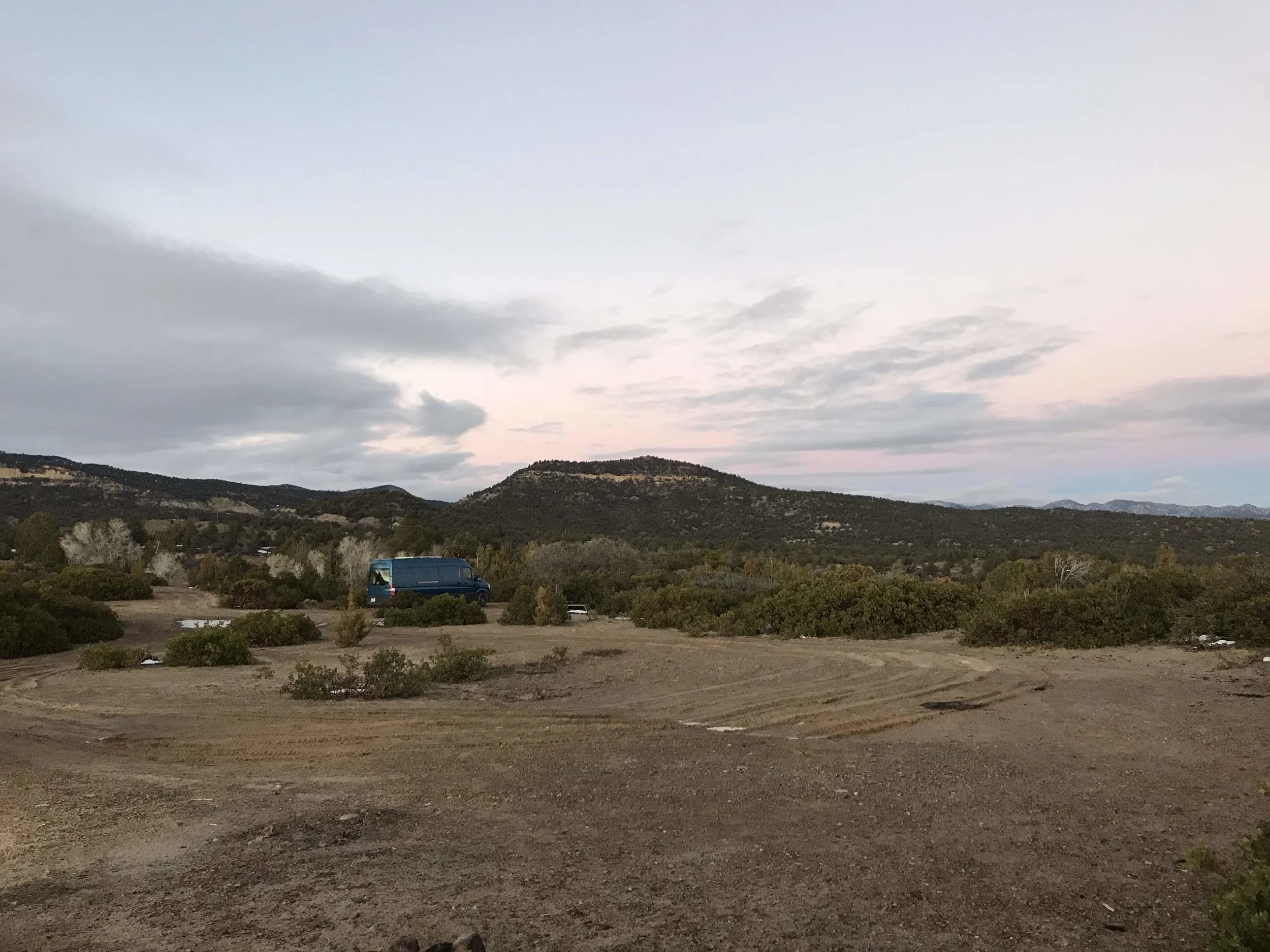7 Great Things to Do in Zion National Park in Winter
Zion National Park was founded in 1919, making it Utah's first national park. It's the third most visited national park with 4.5 million visitors coming to the park each year. The park’s towering sandstone cliffs and canyons draw nature lovers from all over the world. Most people visit Zion during the summer with July being the peak for visitation, but winter is a great time to visit too.
We visited Zion National Park in December, and we thought it was a great time to visit for a number of reasons. In winter you can avoid the oppressive heat of the desert. It was in the 40s and 50s during the day. By visiting in winter, you can also beat the crowds. When we were there in November, there were no long lines of traffic or problems finding parking for our camper van. There was also no shortage of camping spots on BLM land just outside the park, because there were so many fewer people visiting the park.
Unfortunately winter weather can prevent you from accessing some of the more popular hikes in the park. The slot canyon hikes like the Subway or the Narrows require sloshing through water, so in winter you need a dry suit to do those hikes. Icy conditions can make hikes with exposed ledges and heights like Angel’s Landing or the Rim Trails dangerous. But there is still plenty of fun to be had in Zion in the colder months. Here are our top 7 things to do in Zion National Park in winter!
1. Drive the Zion Canyon Scenic Drive
Zion Canyon is the most popular part of the National Park, and with good reason. The Virgin river runs through the canyon with steep red and tan sandstone cliffs rising 2,600 feet above the floor of the valley.
In summer, private cars are prohibited on the Zion Canyon Scenic Drive. From April to November, you can only access the canyon drive on the free shuttle bus. Only in winter can you drive your own vehicle, or in our case, our camper van through the canyon to access all the sights and hikes on your own schedule.
The snow on the sandstone surrounding the canyon is really beautiful in winter.
We spotted these desert bighorns while driving through Zion National Park in December
2. Stroll down the Riverside Trail
At the end of the 15-mile Zion Canyon Scenic Drive, you’ll find the Temple of Sinawava. From the base of high sandstone cliffs, you can hike along an easy paved path that follows the Virgin River, called the Riverside Trail. The 1-mile flat trail on the canyon bottom leads to the popular Narrows slot canyon hike. In winter, the Narrows can only be hiked with a dry suit because it requires wading through the river. When we were there, the trail was closed at about ¾ of a mile in because of ice.
Ian walks along the Virgin River in one of the areas where you can access the river bank.
There are places where you have to walk under huge overhangs of rock on the Riverside Trail.
Several places along the trail give you access to the river, and there are stretches that have small paths you can follow along the river’s edge. In other places, the rock walls hang over the trail. Don’t forget to look up at the walls of the canyon. Hanging gardens of ferns and cactus are draped over the weeping sandstone walls. In winter you’ll find gardens of icicles.
The trail is really accessible—a nice flat paved trail.
The further you walk up the canyon, the narrower it becomes. At the end of the hike, where the Narrows begin, the walls of the canyon butt up against the river.
3. Hike the Grotto Trail, Walter's Wiggles, and Angels Landing
Angels Landing is a narrow steep fin that juts out into Zion Canyon, and it’s one of the most popular hikes in Zion. It’s also been called the world’s most terrifying hike. In winter, icy conditions can make this trail very dangerous, but when we were there in December there was very little ice. If you’re hiking Angels Landing in winter, check at the visitor center for trail conditions and be ready to turn back if things get slippery.
This is the portion of the East Rim Trail that leads you up to Walter’s Wiggles and Angels Landing.
You can actually see the hanging canyon and a trail cut out in this photo. Next to the dark gap to the left of the main monolith in this photo you can see an lighter colored angled line in the rock—that’s the cut out for the trail!
The hike begins at the Grotto Trailhead. The trail begins to climb right out of the gate. The ascent begins gentle, and then quickly rises. In some places the trail is literally carved into the stone of the rock wall—but this isn’t even close to the scary part of the hike.
You’ll definitely want to wear layers for this hike, because you’ll get hot on the way up.
The trail is really a feat of engineering since it essentially scales a rock wall.
So much of the hike looks out over the canyon, so you could only take on a small portion of the hike and still have a great time.
We discovered this neat crack in the rock in Refrigerator Canyon.
There are a lot of cool little nooks to be discovered in Refrigerator Canyon.
Once you are in the hanging slot canyon the trail flattens out. A lot of the trail is paved because it’s such a heavily trafficked trail.
You might get warm on the climb, but you’ll want to pull out your layers when you enter Refrigerator Canyon, a hanging slot canyon high above the valley floor. This part of the trail is pretty flat, but above you the sky is just a sliver between the steep canyon walls.
This cool blob of Moqui Marbles are embedded in the wall of Walter’s Wiggles.
The many tiny stone switchbacks of Walter’s Wiggles.
The next part of the hike turns back toward Zion Canyon and climbs a series of steep compact switchbacks stacked on top of each other, called Walter’s Wiggles. None of these 21 wiggles are more than 25 feet long before switching back. Built by the CCC during the 1930s, these switchbacks are a feat of early trail building that allows you to reach the final ridge.
At the end of Walter’s Wiggles, you reach Scout’s Lookout. From this spot you get a great view of the canyon, and you can assess the hike to the top of Angels Landing. The final hike is on an exposed narrow fin with 1,000 foot drop-offs on either side. There are chains you can hold onto to help you up the steep scramble.
Chains are provided to help you steady yourself on the hike to Angels Landing.
This sign greets you before the chained portion of Angels Landing. Watch for icy conditions in winter.
The view from the saddle before the final climb up the ridge of Angels Landing.
We made it through the steep section of chains to a narrow saddle. From there you can see the final section of chains that is even more frightening. Ian had done the hike before, but at the saddle I wanted to turn back because the drop-offs were so extreme, so we headed back down.
If you’re just looking for a low-key walk, hike the half mile Grotto Trail to the Zion Lodge. Even if icy conditions prevent you from ascending Angels Landing, this trail should still be accessible through most of the winter.
There’s plenty to do in Zion National Park in winter. Even if snow or ice prevents you from accessing Angels Landing or the Rim Trails you can still find easy trails that lead you to incredible views.
4. Don't limit yourself to Zion Canyon or the National Park
There’s more to Zion than the canyon and the national park is surrounded by tons of beautiful public land. We headed down Kolob Terrace Road for a night of free camping in our Sprinter Conversion van. In the summer, the Subway Slot Canyon could be accessed on this road. In the winter, we found a peaceful campsite under a big cottonwood along North Creek (see our free camping recommendations at the bottom of this list.)
Kolob Terrace is a great place for a low traffic road run. On an evening run along the rolling paved road, I saw a group of people in silhouette riding horses on a butte high above the road. It was like a scene straight out of a western.
Kolob Terrace on a moody winter night. I think winter is the best time to visit the desert.
I spotted this rider high on a butte above the road. I felt like I was running through a western movie.
5. Drive through a mountain on the Zion-Mount Carmel Highway Tunnel
This really isn’t a beautiful spot or a great photo op in Zion, but it’s still pretty cool to drive straight through a mountain. The Zion-Mt. Carmel Highway is a 1.1 mile tunnel straight through a sandstone mountain. Huge winding switchbacks lead to the tunnel, and there are pull-outs were you can stop to view the Great Arch of Zion. And if you’re also driving a 170-inch-wheel-base Sprinter like us, you can go through the tunnel without any traffic control. If you’re any bigger, you’ll likely have to pay for traffic control through the tunnel.
6. Hike the Canyon Overlook Trail
The Canyon Overlook Trail is the perfect trail for you if you want a vista of Zion Canyon without having to hike up a lot of elevation gain. The trail begins just east of the Zion- Mt. Carmel Tunnel, and you walk back west to an overlook of Zion Canyon standing atop the Great Arch of Zion (although you can’t see it from the view point). It’s one of the few developed hiking trails in the eastern portion of the park.
There aren’t that many hikes where you can look down at a sculpted slot canyon below you. Pine Creek Canyon runs through this picture.
Parts of the trail are boardwalks mounted to the rock, in places where there was no natural ledge.
The hike runs along this ledge on the rock wall. There are some drop offs, but nothing too crazy.
The trail leads you over layers of slick rock. Below you is the sculpted Pine Creek Slot Canyon. Look carefully and you might see people canyoneering through the dark and winding canyon. In some places where the sandstone drops away, and the trail is just a series of wooden plank walkways mounted beneath overhanging cliffs. The one-mile, round-trip trail leads you to a unique view of the eastern arm of Zion Canyon. The trail is flat and family friendly, making it a great hike for winter weather.
The view from the end of the Canyon Overlook Trail is amazing in the evening when the light is low. You can see the Zion-Mount Carmel Highway and the “windows” where the tunnel goes through the mountain to the left.
7. Visit the east side of the park and Checkerboard Mesa
Many people never get outside of Zion Canyon, and completely miss the higher elevation eastern side of the park. In winter, this part of the park will often be covered in snow while the canyon is mostly bare. There are few developed trails, so you can explore off trail on the sandstone formations or at least drive the 12 mile Zion-Mount Carmel Highway if you’re not into off-trail exploration.
The east end of Zion reminded us a lot of the north end of Yosemite National Park compared to Yosemite Valley (check out our blog post about Yosemite), in that, this eastern part of the park is much less crowded and that it has a very different look than the canyon. The eastern side of Zion is land of rolling petrified dunes and slick rock, rather than jagged cliffs. Make sure to stop at Checkerboard Mesa, a unique sandstone formation with a series of perpendicular lines on it that makes it look like a checkerboard.
Checkerboard Mesa is this really unique formation on the east side of Zion. In winter, the snow really accentuates the Checkerboard pattern in the stone.
The east side of Zion National Park looks very different than Zion Canyon. We felt like we were the only ones on that side of the park.
Free Camping Nearby:
There is a lovely area of free campsites on Kolob Terrace Road. The spots are next to the lovely North Creek outside the small community of Virgin and it’s very close to the Zion Canyon Entrance of the park. We found a great open spot under a large yellow cottonwood. This is a spot where you could definitely tent camp. There were muddy areas at this site though so be careful not to get your vehicle stuck.
I discovered this sound garden while running just up road from our campsite.
This campsite along Kolob Terrace road is really peaceful on a winter’s evening—but you can see how muddy it was.
About 7 miles east of Zion on Utah 9, there are several roads leading into BLM land with tons of great spots for camping. We found an amazing spot on a ridge overlooking buttes and mesas in the distance. There were a few other people there along with us, but we were able to find a nice private spot. Again be careful in the winter time because there were some very muddy areas, and we almost got stuck.
We found another amazing free campsite on BLM land to the east of Zion on Highway 9. It’s rare to find great free camping so close to popular national parks.
What a wonderful feeling it is to wake up in places like this every morning.
Angels Landing, Arches, BlM Land, Canyon Overlook Trail, Canyons, Checkerboard Mesa, Free Camping, Geology, Grotto Trail, Hiking, Kolob Terrace, Mountains, National Parks, Photography, Public Land, Riverside Trail, road Trip, running, The Subway, trails, travel, travel Planning, utah, vanlife, Walter’s Wiggles, wildlife, Winter Travel, Zion Canyon, Zion Narrows, Zion National Park
Have you visited Zion in winter? Share your favorite winter activities and hikes by leaving a comment!

































